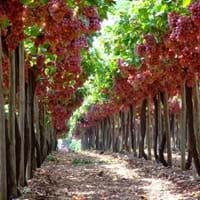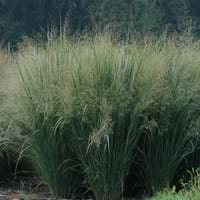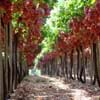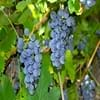Life Span
Annual and Perennial
Perennial
Origin
Hybrid origin
North America, Canada, Mexico
Types
not available
Panicum abscissum, Panicum acostia, Panicum amarum
Number of Varieties
Not Available
Habitat
Terrestrial
Prairies
USDA Hardiness Zone
5-8
4-9
Sunset Zone
1a, 1b, 2a, 2b, 3a, 3b, 4, 5, 6, 7, 8, 9, 14, 15, 16, 17, 18, 19, 20, 21, 22, 23, 24
1a, 1b, 2a, 2b, 3a, 3b, 4, 5, 6, 7, 8, 9, 10, 11, 14, 15, 16, 17, 18, 19, 20, 21, 22, 23
Habit
Vining/Climbing
Upright/Erect
Minimum Width
Not Available
Flower Color Modifier
Bicolor
Bicolor
Fruit Color
Dark Red, Violet
Not Available
Leaf Color in Spring
Green
Green, Light Green, Blue Green, Gray Green
Leaf Color in Summer
Green
Light Green
Leaf Color in Fall
Orange, Gold, Bronze
Red, Green, Orange, Blue Green, Gray Green, Bronze
Leaf Color in Winter
Light Green
Tan, Sandy Brown
Leaf Shape
Irregular
Grass like
Plant Season
Spring, Summer, Fall
Spring, Summer, Fall, Winter
Sunlight
Full Sun, Partial Sun
Full Sun, Partial Sun
Type of Soil
Clay, Loam, Sand
Clay, Loam, Sand
The pH of Soil
Acidic, Neutral, Alkaline
Acidic, Neutral, Alkaline
Soil Drainage
Well drained
Average
Bloom Time
Late Spring, Early Summer, Summer
Early Summer, Summer, Late Summer
Tolerances
Drought
Pollution, Soil Compaction
Where to Plant?
Container, Ground
Ground
How to Plant?
Seedlings, Transplanting
Divison, Root Division
Plant Maintenance
Medium
Medium
Watering Requirements
Water occasionally
Average Water Needs, Do Not over Water, Requires regular watering
In Summer
Less Watering
Lots of watering
In Spring
Adequately
Moderate
In Winter
Ample Water
Average Water
Soil pH
Acidic, Neutral, Alkaline
Acidic, Neutral, Alkaline
Soil Type
Clay, Loam, Sand
Clay, Loam, Sand
Soil Drainage Capacity
Well drained
Average
Sun Exposure
Full Sun, Partial Sun
Full Sun, Partial Sun
Pruning
Remove damaged leaves, Remove dead branches, Remove dead leaves
Prune in spring, Remove dead or diseased plant parts, Remove deadheads
Fertilizers
All-Purpose Liquid Fertilizer
Nitrogen
Pests and Diseases
Red blotch
Red blotch
Plant Tolerance
Drought
Pollution, Soil Compaction
Flowers
Insignificant
Yes
Flower Petal Number
Single
Single
Foliage Texture
Coarse
Fine
Foliage Sheen
Glossy
Matte
Attracts
Not Available
Birds, Wildlife
Allergy
no allergic reactions
Not Available
Aesthetic Uses
Decorating walls, Showy Purposes
Showy Purposes
Beauty Benefits
used as a dye
Not Available
Edible Uses
Yes
Insignificant
Environmental Uses
Air purification, soil erosion prevension on hill slopes
Air purification, Provides ground cover, soil erosion prevension on hill slopes
Medicinal Uses
Diarrhea, Fever, Headache, Hepatitis, Rheumatism, Stomach pain, Urinary tract problems
Not Available
Part of Plant Used
Fruits, Leaves
Leaves
Other Uses
Used for producing cooking oil
Cattle Fodder, Used as Biofuel
Used As Indoor Plant
No
No
Used As Outdoor Plant
Yes
Yes
Garden Design
Edible, Fruit / Fruit Tree, Vine
Container, Feature Plant, Foundation, Mixed Border
Botanical Name
VITIS labrusca 'Fragola'
PANICUM virgatum
Common Name
Fox Grape, Red Grape
Switchgrass
In Hindi
लाल अंगूर
Switchgrass
In German
Rote Trauben
Switchgrass
In French
Raisin rouge
switchgrass
In Spanish
Uvas rojas
switchgrass
In Greek
κόκκινα σταφύλια
switchgrass
In Portuguese
Uvas vermelhas
switchgrass
In Polish
czerwone winogrona
switchgrass
In Latin
uva,
switchgrass
Phylum
Magnoliophyta
Magnoliophyta
Class
Magnoliopsida
Liliopsida
Order
Rhamnales
Cyperales
Clade
Angiosperms, Eudicots, Rosids
Angiosperms, Commelinids, Monocots
Tribe
Not Available
Paniceae
Subfamily
Not Available
Panicoideae
Number of Species
Not Available
Importance of Red Grapes and Switchgrass
Want to have the most appropriate plant for your garden? You might want to know the importance of Red Grapes and Switchgrass. Basically, these two plants vary in many aspects. Compare Red Grapes and Switchgrass as they differ in many characteristics such as their life, care, benefits, facts, etc. Every gardener must at least have the slightest clue about the plants he wants to plant in his garden. Compare their benefits, which differ in many ways like facts and uses. The medicinal use of Red Grapes is Diarrhea, Fever, Headache, Hepatitis, Rheumatism, Stomach pain and Urinary tract problems whereas of Switchgrass is Not Available. Red Grapes has beauty benefits as follows: used as a dye while Switchgrass has beauty benefits as follows: used as a dye.
Compare Facts of Red Grapes vs Switchgrass
How to choose the best garden plant for your garden depending upon its facts? Here garden plant comparison will help you to solve this query. Compare the facts of Red Grapes vs Switchgrass and know which one to choose. As garden plants have benefits and other uses, allergy is also a major drawback of plants for some people. Allergic reactions of Red Grapes are no allergic reactions whereas of Switchgrass have Not Available respectively. Having a fruit bearing plant in your garden can be a plus point of your garden. Red Grapes has showy fruits and Switchgrass has showy fruits. Also Red Grapes is not flowering and Switchgrass is flowering. You can compare Red Grapes and Switchgrass facts and facts of other plants too.





